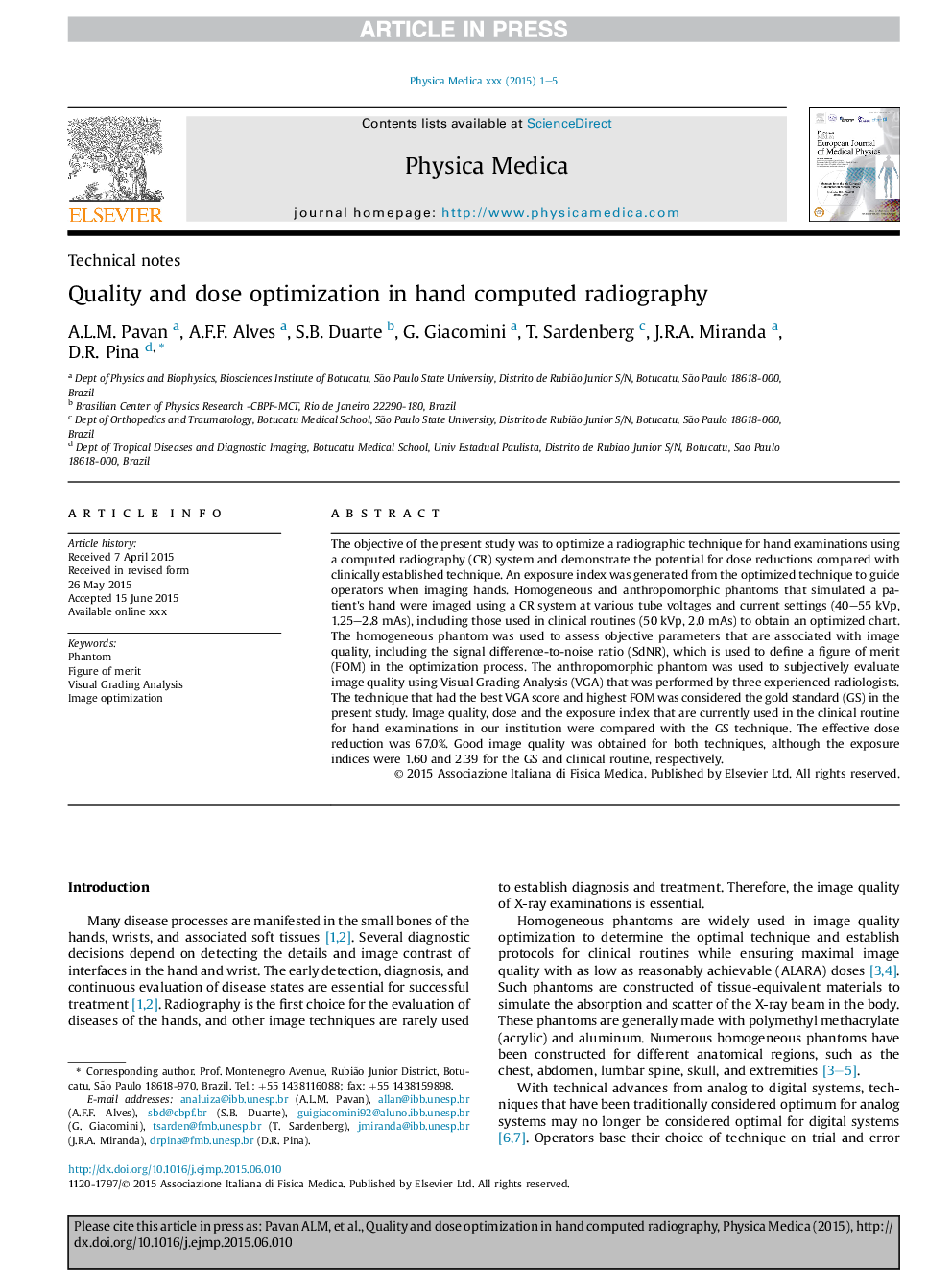| Article ID | Journal | Published Year | Pages | File Type |
|---|---|---|---|---|
| 10731056 | Physica Medica | 2015 | 5 Pages |
Abstract
The objective of the present study was to optimize a radiographic technique for hand examinations using a computed radiography (CR) system and demonstrate the potential for dose reductions compared with clinically established technique. An exposure index was generated from the optimized technique to guide operators when imaging hands. Homogeneous and anthropomorphic phantoms that simulated a patient's hand were imaged using a CR system at various tube voltages and current settings (40-55Â kVp, 1.25-2.8Â mAs), including those used in clinical routines (50Â kVp, 2.0Â mAs) to obtain an optimized chart. The homogeneous phantom was used to assess objective parameters that are associated with image quality, including the signal difference-to-noise ratio (SdNR), which is used to define a figure of merit (FOM) in the optimization process. The anthropomorphic phantom was used to subjectively evaluate image quality using Visual Grading Analysis (VGA) that was performed by three experienced radiologists. The technique that had the best VGA score and highest FOM was considered the gold standard (GS) in the present study. Image quality, dose and the exposure index that are currently used in the clinical routine for hand examinations in our institution were compared with the GS technique. The effective dose reduction was 67.0%. Good image quality was obtained for both techniques, although the exposure indices were 1.60 and 2.39 for the GS and clinical routine, respectively.
Related Topics
Physical Sciences and Engineering
Physics and Astronomy
Radiation
Authors
A.L.M. Pavan, A.F.F. Alves, S.B. Duarte, G. Giacomini, T. Sardenberg, J.R.A. Miranda, D.R. Pina,
